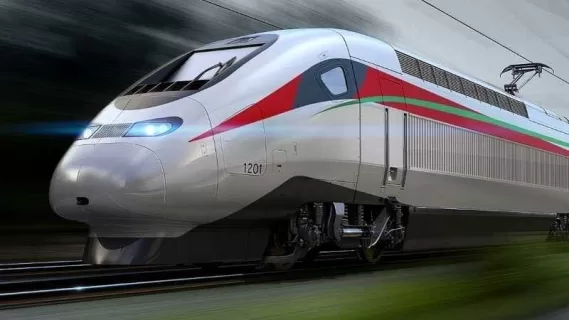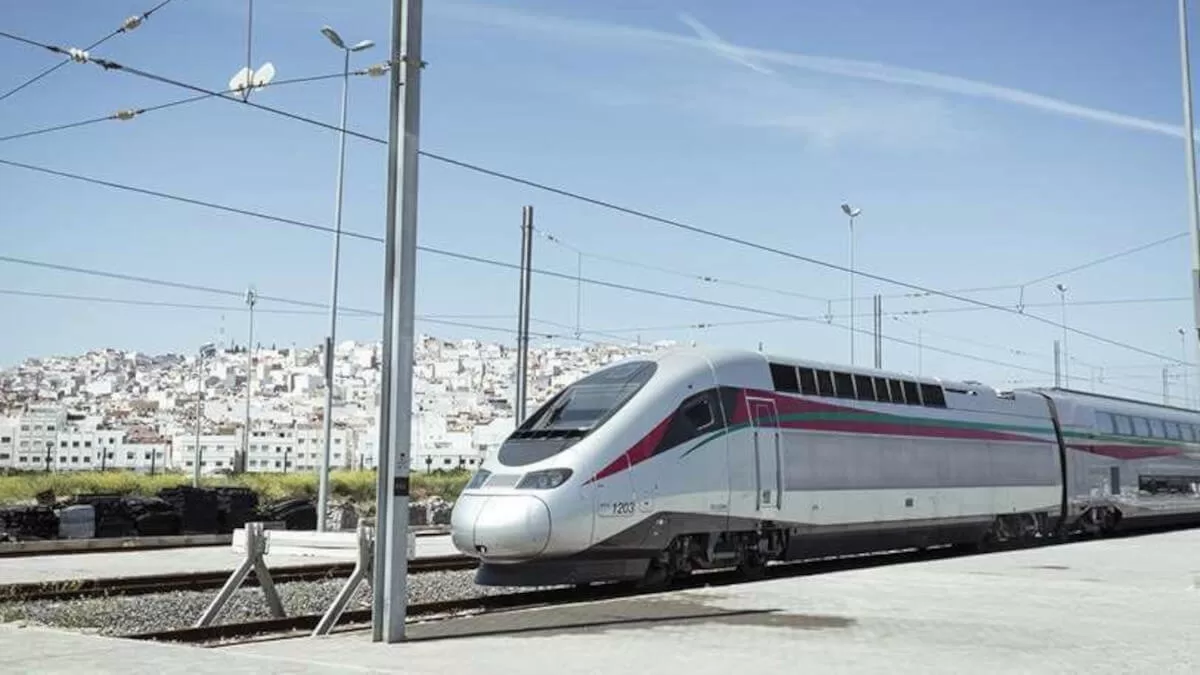Thanks to rail modernisation, Morocco’s economy is set to enjoy a real boom, with the creation of thousands of jobs. Morocco, the only African country with a high-speed train line, has announced a plan to build Morocco’s 1,300 Kilometer High-Speed Rail Line by the year 2040.
Since the year 2018, the Moroccan high-speed train (TGV) has connected Tangiers to Casablanca in almost 2 hours, considerably reducing the five-hour journey time.
Morocco’s Minister of Transport and Logistics, Mohamed Adeljali, has stated that the Mohammed V international airport in Casablanca and the Rabat-Sale airport will be connected by TGV. This project is part of the Office National des Chemins de Fer (ONCF)’s “Rail Plan 2040”, which aims to strengthen rail connections between the kingdom’s cities and airports.
The plan calls for the construction of 1,300 km of new high-speed lines and 3,800 km of additional rail lines, linking 43 cities instead of the current 23. The authorities estimate that 87 percent of the national population, compared with 51 percent today, will benefit from this modernised rail network. In addition, a total of 12 ports and 15 international airports will be served, compared with 6 and 1 respectively at present.
Significance of the Project
The modernisation of the rail network should stimulate the Moroccan economy, creating thousands of jobs and boosting tourism by optimising journey times. The technical partners for this project have not yet been announced, but the French group Alstom, which was involved in the first Moroccan TGV, could be called upon once more.
The authorities anticipate that it will provide transport for 87 percent of the country’s population, compared with 51 percent today.

In addition, there will be links to 12 ports, compared with 6 at present, as well as 15 international airports. For the moment, only Mohammed V airport is connected. According to the government, Morocco’s economy is set to boom as a result of this rail modernisation, with the creation of thousands of jobs.
The same applies to tourism, which will also benefit from this boost by optimising journey times between Morocco’s cities.
Project Similar to Morocco’s 1,300 Kilometer High-Speed Rail Line
In just over five years, there’s a good chance that you will be able to board a high-speed train in Madrid and travel from Spain to the Moroccan city of Casablanca in five and a half hours, hurtling through a new tunnel under the Strait of Gibraltar. This may sound like something from a Jules Verne novel, but it was first discussed by Spain and Morocco in 1979. They even did feasibility studies through 1981, but the project failed to progress beyond that point.
Spain and Morocco are now reconsidering this ambitious undertaking, spurred in large part by the approaching 2030 FIFA World Cup. It will mark the centennial World Cup competition, and for the first time, three countries from two continents will host the competition: Spain, Morocco, and Portugal. Fans will want to travel between these countries for matches as quickly and efficiently as possible. They might as well do so on a 21st century engineering marvel.
The Moroccan National Company for Strait Studies (SNED) has announced that it has begun researching the project’s viability, called the Euro Africa Gibraltar Straight Fixed Link. Spain commenced such studies in 2023 under the aegis of the Spanish Society for Fixed Communication Studies across the Strait of Gibraltar (SECEGSA).
Also read: 375km Kentira-Marrakech high-speed railway Tender Issued in Morocco
Morocco-Spain High-Speed Rail Route Set to Link Madrid to Casablanca

